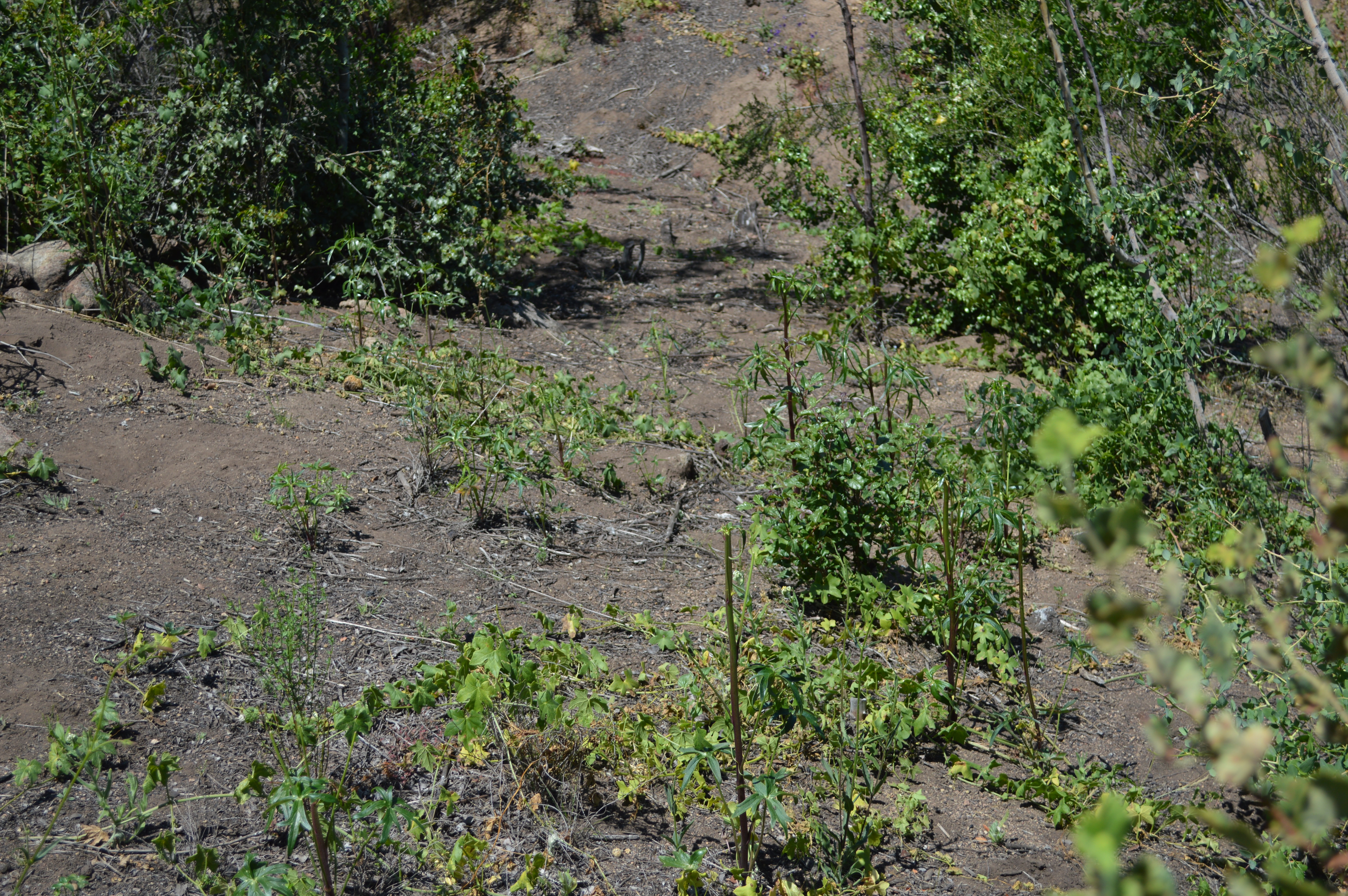
Herbivory/predation
Red-tailed Hawk
Photo Credit: Emily Perkins, SDMMP

Herbivory/predation
Herbivory from deer
Photo Credit: Emily Perkins, SDMMP
|
California Least Tern Predator Monitoring (Ternwatchers)
Volunteer-based predator monitoring program at the nesting sites in Mission Bay. Citizen scientists are trained to monitor nesting sites for predators from mid-April through late May, with the program concluding the end of September.
|
|
Coastal Cactus Wren Conservation Network
The Coastal Cactus Wren Conservation Network is an ad hoc group of more than 100 individuals representing research institutions, land management agencies, local government, non-profit conservation organizations and wildlife agencies. Members work together to exchange research and management information to develop best practices, policies, and programs that promote conservation and recovery of this bird throughout its range (Ventura, Los Angeles, San Bernardino, Orange, Riverside, and San Diego counties). This information will inform publication of a regional conservation strategy for the coastal cactus wren.
Cactus wrens (Campylorhynchus brunneicapillus) are distributed across the arid regions of the southwestern United States and northern and central Mexico (Hamilton et al. 2011). While the desert populations are fairly abundant, populations of coastal cactus wrens have declined dramatically over the past 30 years, with extirpation and genetic isolation affecting many locations as a result of habitat loss, habitat fragmentation, edge effects of development, and catastrophic fires (Solek and Szijj 2004). The coastal population is unique in that it occurs exclusively within the coastal sage scrub plant community, ranging from Ventura County south into San Diego County, U.S.A. and northwestern Baja California, Mexico. The firestorms of 2007 impacted several strongholds for the coastal cactus wren in Orange and San Diego counties. The significant loss of habitat and birds was the impetus for formation of the Coastal Cactus Wren Network.
For more information on the Coastal Cactus Wren Conservation Network, please see the document titled "Coastal Cactus Wren Working Group Regional Goals, Objectives, and Strategies".
|
|
D Street Fill Least Tern Management 2023
The project will assist in management and recovery of two federal and state-listed species, the California least tern (Sternula antillarum browni) and western snowy plover (Charadrius nivosus nivosus), which occur at the D Street Fill during the avian breeding season (April through September). The project goal is to prepare the site for the 2023 and 2024 nesting seasons by performing site grading, debris removal, vegetation control, invasive plant management, avian monitoring, and predator management to maintain the site as suitable breeding, nesting, and foraging habitat.
|
|
Hodges Reservoir-Bernardo Bay Cactus Wren Habitat Restoration Grant Project
This project restored habitat for the California Species of Special Concern, the coastal cactus wren (Campylorhynchus brunneicapillus), near the Hodges Reservoir-Bernardo Bay. This included a 20 acre restoration of cactus burned in the 2007 Witch Creek Fire. Additionally, unauthorized trails were closed off and the soil was stabilized to minimize erosion and filter runoff into source water reservoir. The purpose of this restoration project was to re-establish cactus wren habitat and connectivity to eastern core habitat areas.
|
|
Rare Plant Inspect and Manage Monitoring 2014-2026
From 2014-2026, a Management and Monitoring Strategic Plan (MSP Roadmap) monitoring objective for 30 rare plant species is to inspect occurrences to determine management needs. The inspect and manage (IMG) objective is implemented to document the status of rare plant occurrences and assess habitats and threats to develop specific management recommendations. IMG monitoring is implemented by a combination of land managers and contracted biologists in coordination with the SDMMP. Available rare plant data is posted below. New annual updates are typically posted in March. Based upon an evaluation of these data, a 2014-2026 monitoring schedule has been developed for the 30 rare plant species (attached below). Coordinating data collection across the region allows analyses of species and population trends over time and provides a better understanding of the association between habitat and threat covariates and population dynamics.
|